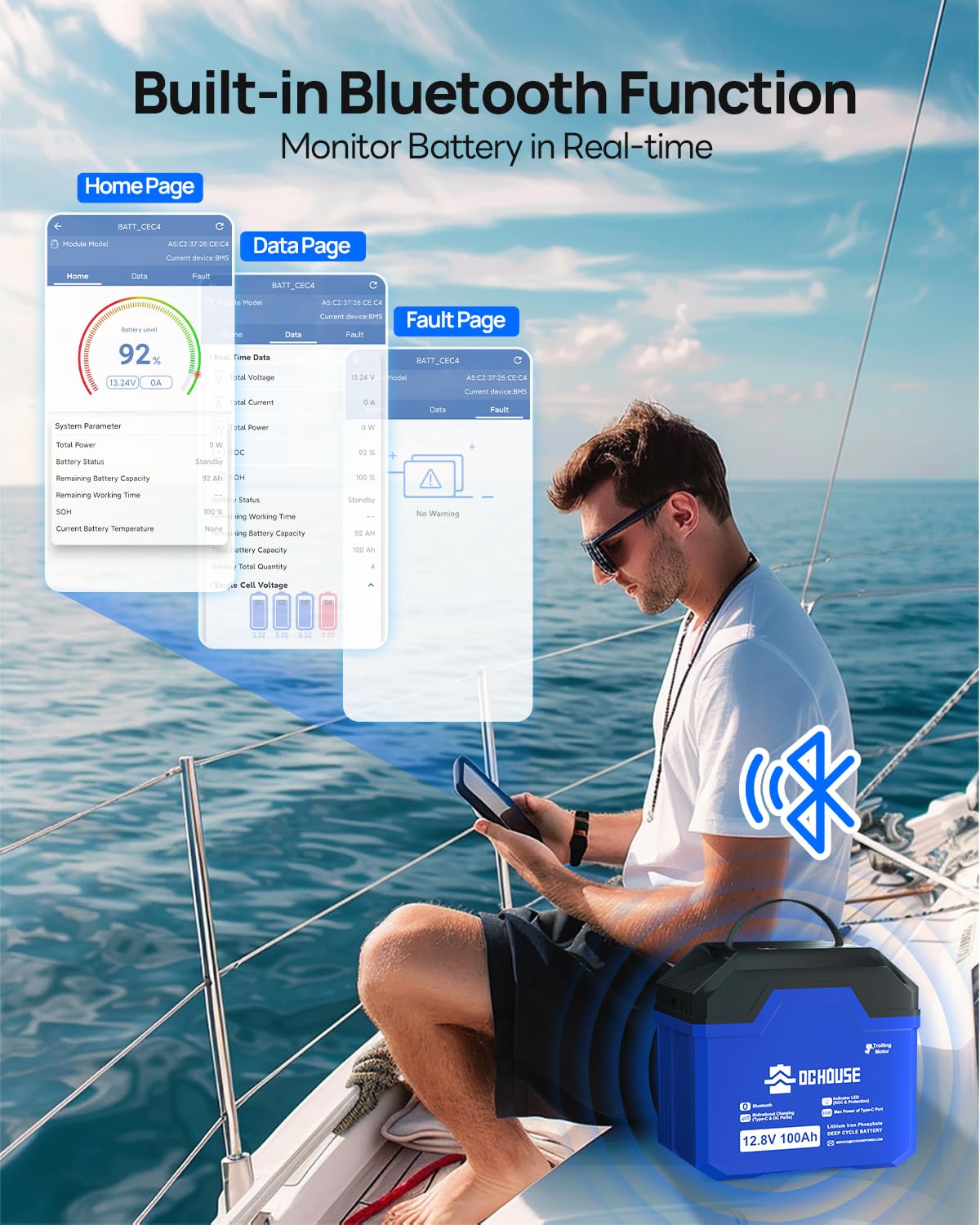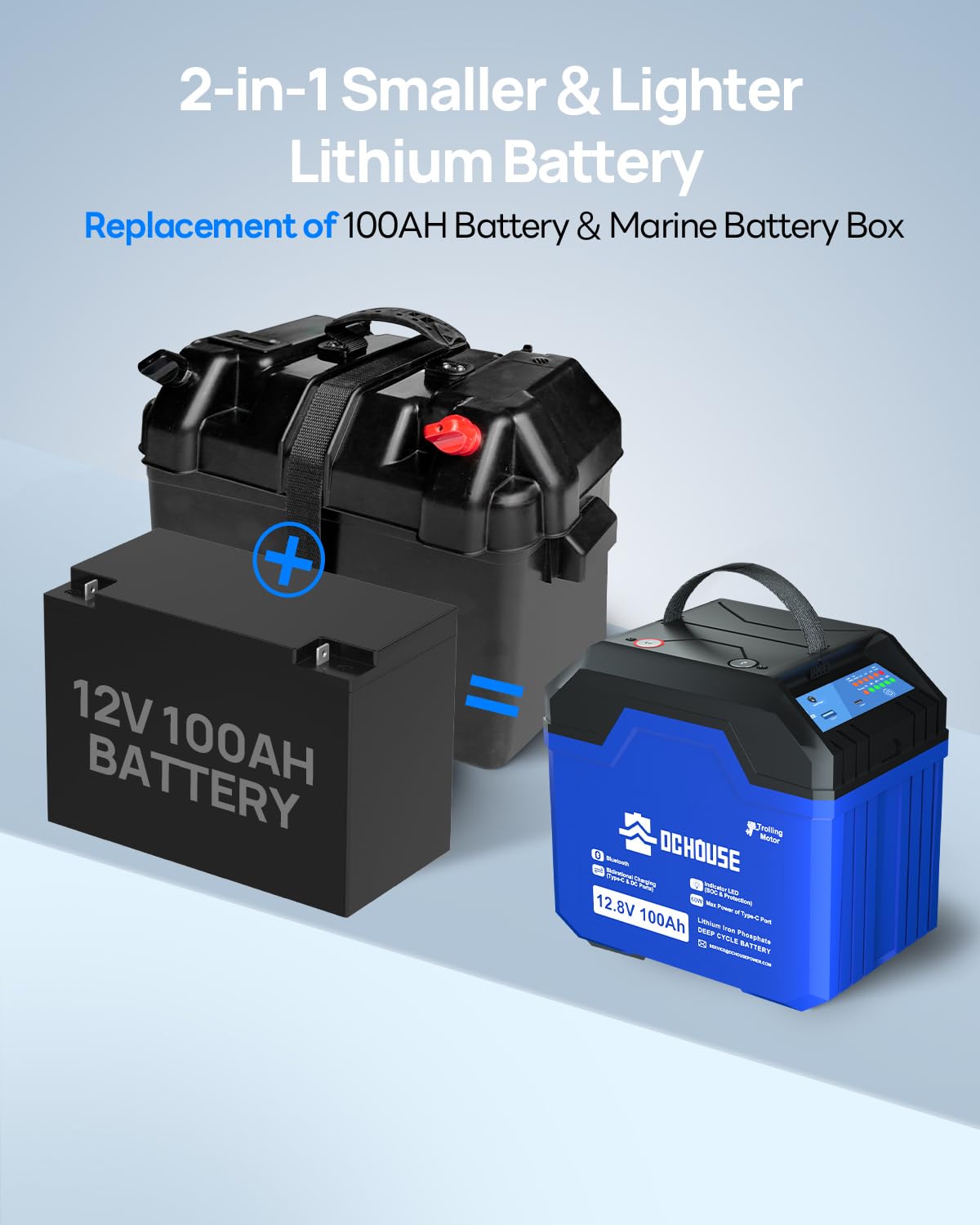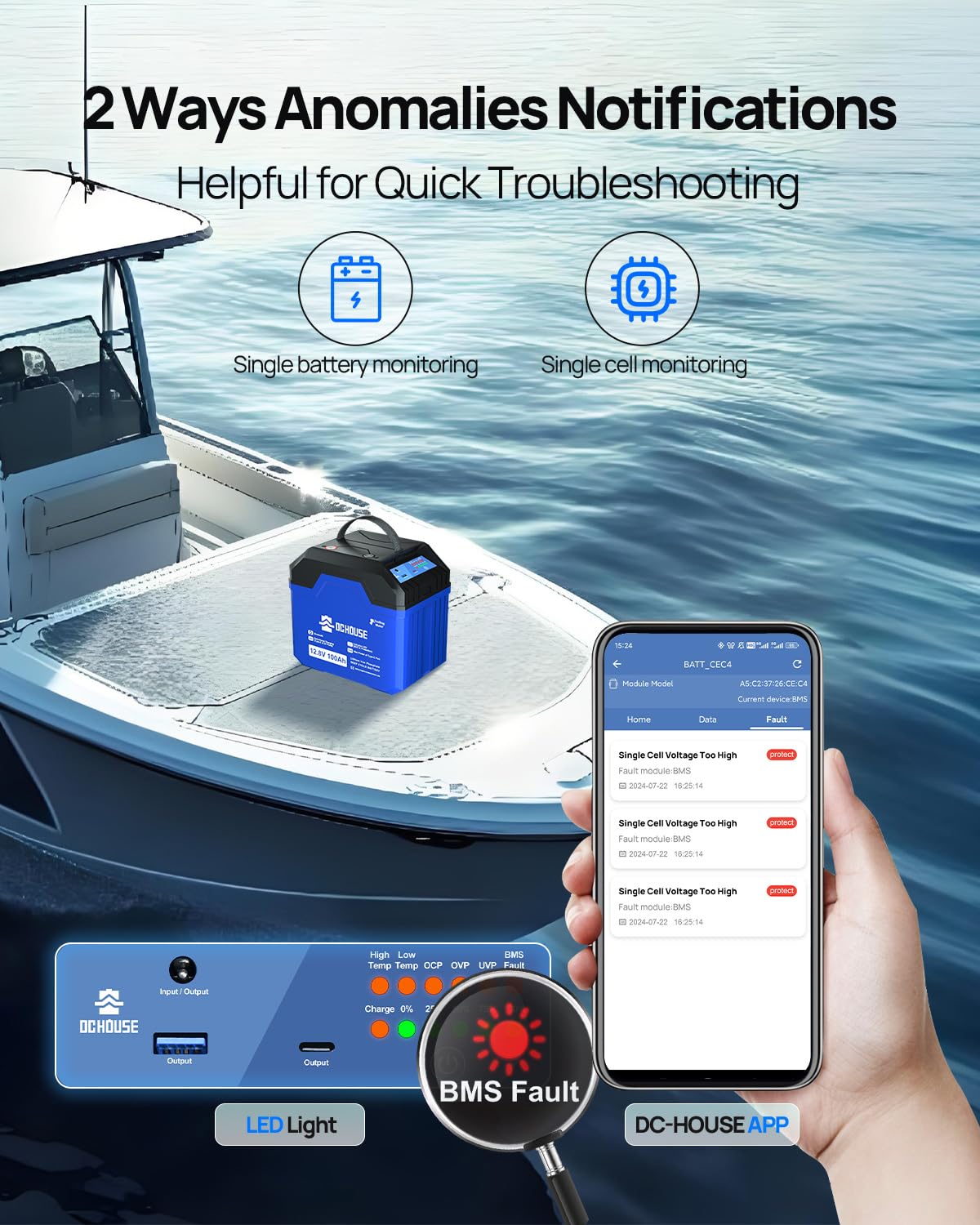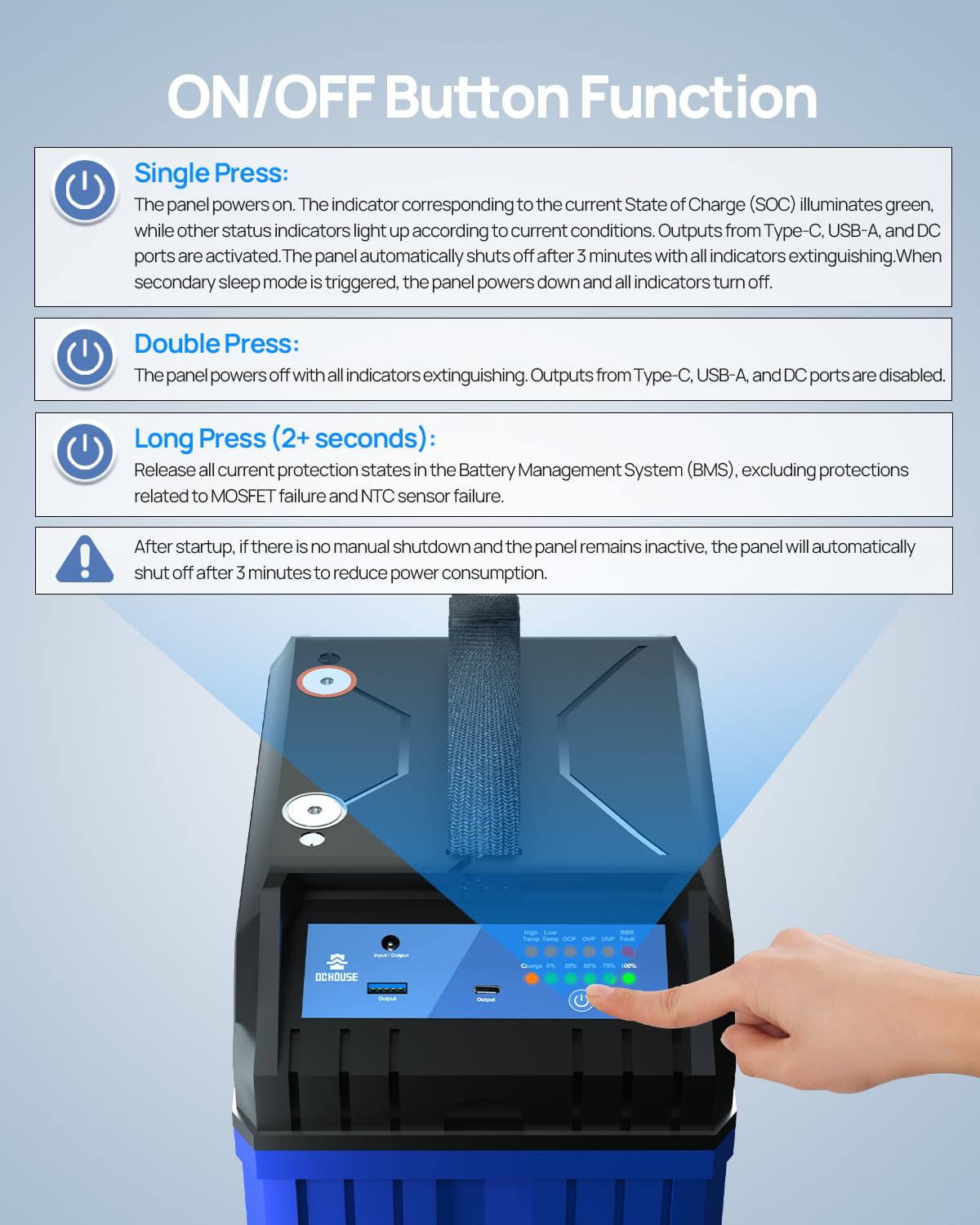









🔋 Power your freedom, anywhere, anytime.
The DC HOUSE 12V 100Ah Portable Lithium Battery features advanced Lifepo4 technology with automotive-grade A cells, delivering a massive 1280Wh capacity and over 4000 deep charge cycles. Equipped with a built-in 100A Battery Management System, it ensures safe, stable performance with multiple charging options including USB-A, Type-C, solar, and DC ports. Weighing only 22.9 lbs, this compact powerhouse is designed for outdoor enthusiasts seeking reliable, long-lasting energy for trolling motors, RVs, and camping adventures.
| Manufacturer | DCHOUSE |
| Brand | DCHOUSE |
| Batteries | 1 12V batteries required. |
| Item model number | 12V 100AH OUTDOOR |
| Manufacturer part number | B0CYQ2Z92C |
-**-
All well
Got the 12V/12Ah/154Wh version quickly, safely packaged, and all is as it should be. Not too large or heavy; it can be taken on a walk.It was pre-charged at perhaps 50% and works well with a transceiver that draws 6 Amps max, ca 450mA when receiving only.I recharged the battery with a bench power supply that supports CV&CC mode as required.DISCLAIMER: It is strongly discouraged to use anything else but a dedicated battery charger with appropriate settings to charge Lithium batteries. If improperly handled these batteries can get damaged or destroyed, and in the worst case they can explode into a difficult to extinguish massive fire.The battery specs claim C=12A and a standard charging current of 6A at 14.2-14.6V. To start on the safe side I set the power supply to 14.2V/2A or C/6. At 2A and 13-14V the battery gets charged at 26-28W which predicts a charging time of around 6h given a capacity of 154Wh.The picture shows a charging diagram (upper left). All looks as expected. There are plenty similar diagrams available on the internet for LiFePo batteries. The battery did not get warm (22C room temperature), but the power supply, rated 300W, switched the fan on every 5 minutes for 5-10 seconds. Nothing to worry about.The upper right plot shows a discharge curve when powering the receiver at an estimated 450-550mA, which is what the receiver draws when powered by the bench power supply (which displays the current). 500mA would be C/24 implying a total discharge time of 24hours at that load. The battery was probably only charged to about 95% and gets discharged to about 15%, a difference of 80%, in a little more than 1400 minutes = 24 hours in total. That might suggest an up to 20% higher capacity than the specs claim, but much of this discrepancy is likely due to an overestimated discharge current.The lower left plot is for a second charge of the battery at 14.6V / 6A = C/2 from around 15% to close to 100% - the internal safety circuits (BMS) switched the charging off at the end. The charging time is a little short of 2 hours as expected.The lower right plot is a second discharge curve using the same receiver as before. The initial sharp drop is common when discharging LiFePo batteries the first five or so percent down from 100% to 95%; this time the battery discharged in a bit more than 24 hours down to a level between 15 and 20%.Whereas it is difficult to determine the precise charging level from the measured voltages in the flat regions, it is easy to detect the much sharper transitions from steep to flat in the charge and discharge curves. These can be used to restrict charge/discharge ranges to ~80% only, which is often claimed to prolong life of LiFePo batteries. However, every few times these batteries must be charged full in order to trigger the internal balancing processes.Somebody mentioned in a different review their battery gave up after 6 charges. That may have been a dud or the BMS somehow got triggered and the battery is just sleeping now. Some battery chargers have a wake-up mode. For me, so far everything seems fine.For outdoor activities and carrying the battery in a backpack, the terminals of the battery are too exposed - I'll have to build some caps to avoid accidental shortcuts. The connectors can also be mixed up easily - adding 10 to 20 Amp diodes in the charging and power cables will make sense to avoid accidental wrong polarities.
M**
Great. So light
Using it to power my 34 ft lb trolling motor. Amazing but you can’t use your lead acid charger apparently so had to buy a new one.
P**H
Bought for my gogo scooter
Working well after 8-10 charges so far
S**
Very good battery
This is the second one of these I've purchased to run in parallel in my van build. They are excellent batteries. No problems after 8 months use. Good size, capasity and weight, useful DC and usb c sockets built in, If only they had a state of charge indicator built in as well they'd be perfect.
M**S
Waste of money and time
Bought to make power pack to charge mobile phone. It doesn’t even have enough power to fully charge my phone once on first time using this. Very disappointing my lead acid equivalent battery lasts me for a 96hr tripHoped this would cut down on weight waste of money
D**R
Great for disabled buggy
I used these to replace heavy lead acid batteries. These lipo batteries have more power, last longer and most of all very light. Best and first thing you should do to your electric buggy or wheelchair. Great buy.
P**B
Tested slightly over Ah showed on case. Very Happy
Excellent for replacing my power chair battery’s they’re a standard dimensions (As AGM 22Ah lead batteries) unlike an orange brand. Also vastly improved range. Very pleased with purchase and performance slightly higher Ah than shown. Will be using DC Home in future for sure as good or better than the orange one.
L**R
Battery
Works great on my golf trolley